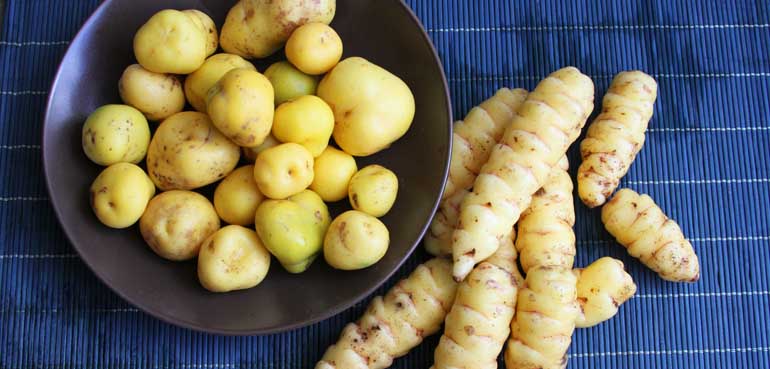By: Kristen Castillo
Adding a new vegetable into the mix, whether sweet or savory, can inspire your taste buds. Soon you may find yourself lingering a little longer in the produce section to find something new.
Still, some veggies are lesser-known or unknown altogether! Check out these picks for five veggies you’ve probably never heard of and then challenge yourself to find, prepare and enjoy some exotic selections.
Nopales
Also known as edible cactus, cactus paddles or cactus pads, nopales, which taste like green beans, have iron, beta-carotene, vitamin C, calcium and some B vitamins.
Sold at Mexican grocery stores, nopales are available year round with peak season being spring through fall. They can be served raw or cooked. Just be sure to clean the fleshy green cacti leaves, carefully de-spining the prickly veggie. Save the prep time with pre-prepared nopales in the produce section.
Add cut up nopales to salsa, salad and side dishes. Nopales are especially delicious when paired with scrambled eggs!
Fiddleheads
Don’t let the funny name stop you from trying this tasty veggie! Fiddleheads, which are compared in taste to broccoli and asparagus, have many health benefits. Research shows this spring crop has two times the antioxidants of blueberries. Plus they’re high in iron as well as in anti-inflammatory omega-3s.
Make sure you wash them, and also, don’t eat them raw, which can result in illness. Instead sauté fiddleheads as an appetizer or a side, or serve them for the main dish, such as fiddleheads and shrimp tossed with pasta.
Oca
An edible crunchy root, oca is a versatile vegetable which can be served boiled, baked or fried. The cylindrical veggie, which is similar to potato, can be yellow, white, purple or red.
Native to the Andes, including Argentina and Peru, oca is also popular in Mexico, where it’s eaten raw with salt, lemon and hot pepper. It can also be sundried to become sweeter and used in desserts.
Celeriac
Known as an ugly vegetable, celeriac has lots of flavor – tasting like a cross between parsley and celery. Don’t eat the greenery; instead, go for the edible roots! The autumn veggie is also called celery root, knob celery or turnip-rooted celery.
Celeriac is great in soup, stew and cooked with a roast. The taste can be strong on its own though, so Epicurious suggests using it grated raw in a salad, paired with other strong flavors such as carrots and beets.
Daikon Radish
This winter, white veggie grows in southwest and eastern Asia. The daikon radish has been linked to many health benefits, including reduced inflammation, a boost in immunity, improvement in digestion, and like with many vegetables, prevention of certain types of cancer. It may also stimulate weight loss.
Daikon radish is typically diced and added to soups, salads, condiments and rice dishes. It’s also available as a juice, potentially helping with digestion.
Fruits and Veggies More Matters has 10 suggestions for serving daikon, including as a rainbow slaw salad.
When looking for ways to bump up your veggie intake, think outside the box with more unusual choices like these to add flavor and variety to your meals. What unusual vegetables would you recommend?

